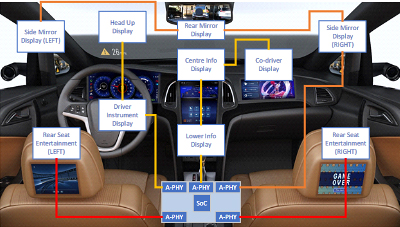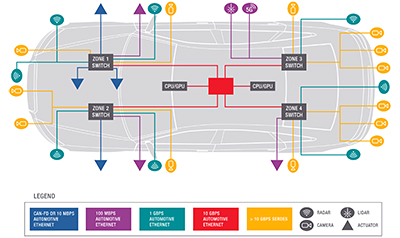In this two-part guest commentary, Carrie Browen and Kevin Kershner from Keysight Technologies share their insights into the future of high speed in-vehicle display and sensor connections. You may find Part 1 here.

Automotive display use-case. © 2021 MIPI Alliance, Inc.
For this second half of our commentary, we begin with an introduction of SerDes.
In today’s infotainment systems, it is common for in-vehicle cameras and displays to be connected to the image-processing electronic control unit (ECU) via a SerDes (serializer/deserializer) connection.
Future Prediction
More cameras, more connections, and more sensors with greater accuracy, less weight, and increased safety.
Undoubtedly, there will be a need for an in-vehicle network to seamlessly handle these challenges.
Those in-vehicle networks will need to be tested, they will need to be interoperable, and they will need to be secure.
Today, they are delivered by individual vendors using closed, proprietary standards.
Extending the reach of feature-rich SerDes links can require operating at lower Baud rates and higher order modulations (e.g. PAM-4).
In addition, it will require higher bandwidth Ethernet links as primary interconnects between zones, perhaps with 802.3ch support up to 10 Gbps throughput.
Emerging SerDes standards like mobile industry processor interface (MIPI) A-PHY (MIPI A-PHY is a physical layer specification targeted for ADAS/ADS surround sensor applications and Infotainment display applications in automotive) and Automotive SerDes Alliance (ASA) will be implemented by multiple silicon vendors.
This will create a competitive market that acts to drive down the cost while delivering application specific features.




